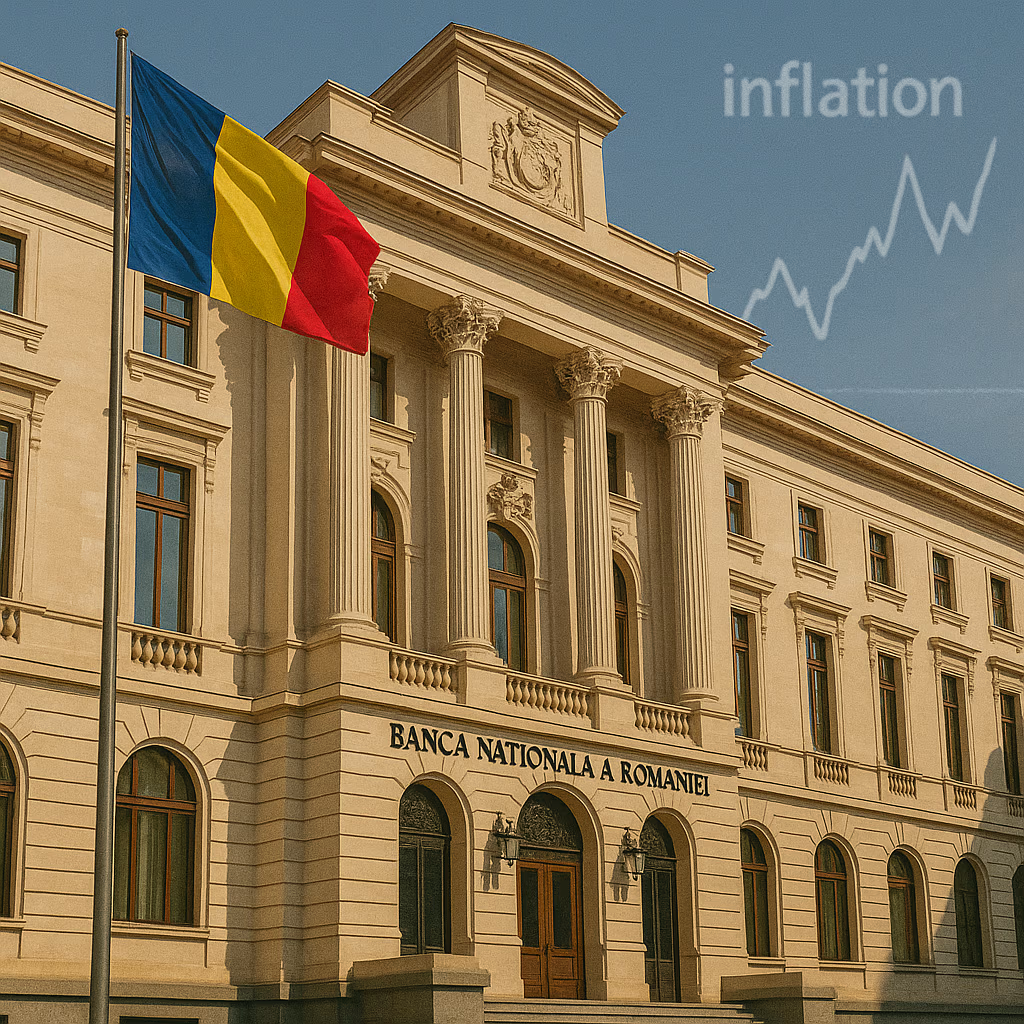The National Bank of Romania (NBR) is expected to keep its benchmark interest rate unchanged in the coming months, as policymakers remain concerned about the risk of renewed inflationary pressures. Despite signs of moderating price growth earlier this year, fresh economic data and global market uncertainties have led the central bank to adopt a cautious approach.
Inflation Concerns Resurface
Romania’s inflation rate has eased from the double-digit highs recorded in 2022 but remains above the NBR’s target range of 2.5% ± 1 percentage point. While core inflation has shown signs of improvement, food and energy costs remain volatile, driven by global commodity price fluctuations and regional supply chain disruptions.
“The recent slowdown in inflation is encouraging, but risks remain elevated. We must ensure that any policy shift does not jeopardize the progress we have made,” an NBR official stated.
The central bank is particularly wary of external factors such as higher oil prices, currency volatility, and geopolitical tensions in Eastern Europe, which could quickly reignite price pressures.
Current Economic Landscape
Romania’s economy has been growing at a steady pace, but several challenges remain:
- Economic Growth – GDP expanded at a moderate rate in the first half of the year, supported by resilient domestic demand and strong EU-funded infrastructure projects.
- Currency Stability – The Romanian leu has remained relatively stable against the euro, aided by the NBR’s interventions and supportive capital inflows.
- Fiscal Policy – Government spending is elevated due to social programs and public sector wage increases, adding upward pressure to demand and potentially inflation.
- Labor Market – Unemployment is low, but wage growth has outpaced productivity in some sectors, which could feed into higher consumer prices.
Why the NBR Is Holding Rates
The decision to maintain the policy rate is rooted in a desire to anchor inflation expectations and avoid policy reversals that could undermine credibility. While some analysts argue for gradual rate cuts to stimulate investment and ease financing costs, the central bank sees the risk of inflation re-acceleration as a more pressing concern.
The NBR’s cautious approach is also influenced by the European Central Bank’s monetary stance and broader global financial conditions. Tight policy across major central banks means that premature easing in Romania could put downward pressure on the leu, further complicating inflation control.
Market Expectations
Financial markets widely expect the NBR to keep its key rate steady in the near term. Bond yields have remained stable, and the leu’s exchange rate has shown minimal volatility, indicating investor confidence in the central bank’s measured approach.
However, traders are watching closely for signals on when the NBR might pivot to easing. Many believe rate cuts could be possible in late 2025 if inflation continues its downward trajectory and external risks subside.
Risks That Could Delay Easing
Several factors could keep the NBR on hold for longer:
- Energy Price Shocks – Any resurgence in oil or gas prices would have an immediate impact on consumer costs.
- Food Price Volatility – Agricultural supply shocks, such as droughts or crop failures, could push food inflation higher.
- Fiscal Slippage – Expansive government spending without corresponding revenue growth could fuel demand-driven inflation.
- Currency Depreciation – A weaker leu would make imports more expensive, adding to inflationary pressures.
The Road Ahead
For now, the NBR is prioritizing price stability over short-term growth acceleration. Policymakers are expected to remain data-dependent, adjusting their stance only when inflation is firmly within the target range and underlying pressures have eased.
While the central bank acknowledges the drag that high interest rates can place on economic activity, it sees this as a necessary trade-off to protect the economy from prolonged inflation.
Romania’s central bank is set to maintain its benchmark interest rate amid lingering inflation risks, signaling a commitment to safeguarding price stability over pursuing immediate growth stimulus. With external uncertainties and domestic price pressures still in play, the NBR’s cautious stance aims to preserve economic stability and maintain investor confidence.
Should inflation continue to ease in the months ahead, the door to gradual rate cuts may open — but for now, caution remains the guiding principle.





